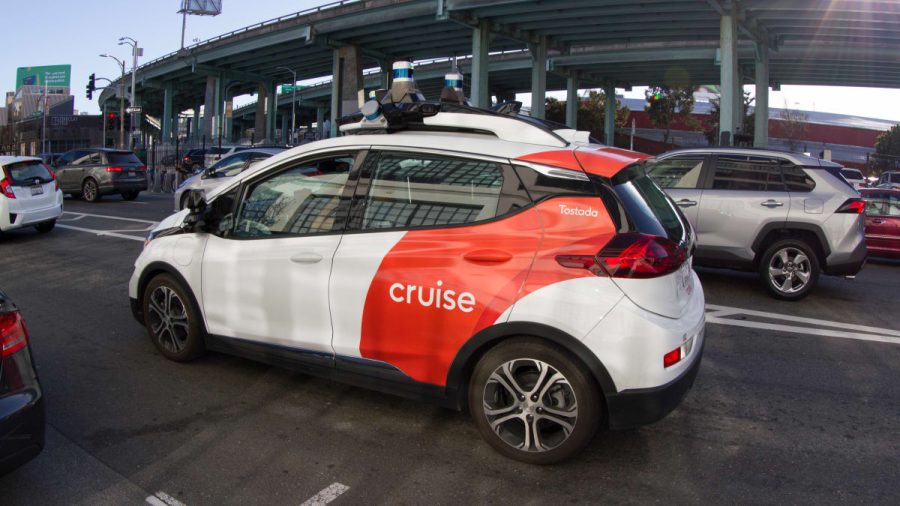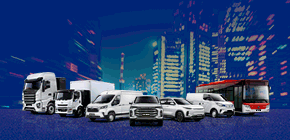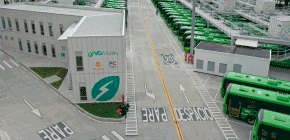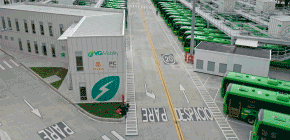In September, Cruise, an autonomous-vehicle company majority held by General Motors (GM) – Get Free Report, expanded its driverless ride service into Phoenix, which had been the territory of Waymo, Alphabet’s self-driving division.
Now Cruise is going deep into the heart of Texas by expanding into Houston and Dallas.
«We’ll start supervised driving in Houston in the coming days, with Dallas to follow shortly thereafter,» the company tweeted on May 10.
Cruise will have its autonomous hands full in Houston, which was ranked No. 3 of 15 large cities for worst traffic in the 2021 edition of Texas A&M’s Urban Mobility Report.
Last year, Cruise driverless taxis hit the streets of Austin, which, in addition to being the Texas state capital, is close to the headquarters of Elon Musk‘s Tesla (TSLA) – Get Free Report.
GM acquired Cruise in 2016 and Chief Executive Mary Barra said she took her first Cruise driverless ride last year.
«Years ago, as we imagined a world with zero crashes, zero emissions and zero congestion, this is the type of experience we dreamt about – and now our autonomous future is here,» Barra said.
Regulatory Concerns About Robotaxis
Cruise, which also offers a robotaxi fleet in San Francisco, is expected to generate $1 billion in revenue for GM in 2025.
The company is producing chips that power its autonomous vehicles in a bid to reduce reliance on third-party suppliers and to lower costs.
“The adoption of robotaxis and roboshuttles depends on four main drivers: regulations, technology readiness, business-case attractiveness, and customer preference,” the consulting firm McKinsey said a 2022 report. “Customer preference strongly depends on how the cost of these AV services compares with other mobility modes.”
While fully burdened expenses for such services are very high today — because of the high cost of technology, development, and operations — the report said that these could decline significantly in the coming decade.
That’s as autonomous-vehicle technology advances and smarter, seamless multimodal mobility ecosystems emerge.
“Despite their additional technology costs, robotaxis could become price competitive with private nonautonomous cars and even transit services,” McKinsey said.
Of course, nothing in this life comes easy. Officials in San Francisco have complained about both Cruise and Waymo (GOOGL) – Get Free Report vehicles causing traffic tie-ups.
A letter from the San Francisco County Transportation Authority in January to California regulators cited at least 92 reported incidents of Cruise robotaxis making sudden stops in the street through Dec. 31, NBC reported.
The authority said that driverless Cruise vehicles have also obstructed firefighters rushing to a three-alarm fire and/or illegally entered areas where efforts to douse a fire were in progress.
Robotaxis Might Prompt Job Losses
The agency is asking regulators to hold off on unleashing robotaxis throughout San Francisco at all hours until more information about why and how often they periodically clog traffic is gathered.
And robo-taxis will also have an impact on jobs.
In a report entitled «Rethinking Transportation,» researchers at the RethinkX think tank said that as many as five million jobs may be lost, leading to aggregate income losses of $200 billion per year.
«These losses can be offset both by job gains, credit elsewhere in the economy that will arise from increases in consumer disposable income and productivity, and by job creation associated with global technology leadership,» the report said.
In 2017, Enrique Dans, a professor at IE Business School in Madrid, noted the impact of automation on the taxi industry. He wrote in a LinkedIn post about taxi drivers in Madrid and Barcelona who had gone on strike to protect their services against companies like Uber (UBER) – Get Free Report and Cabify, which operates in Spain and Latin America.
«The enemy of taxi drivers is neither Uber nor Cabify: It is the advance of technology, and fighting that is a losing game,» he wrote. «The sad reality is that taxi drivers are fighting for the crumbs from the table: They will soon be extinct.»
Dans predicted at the time that «the taxi as we know it has three or four years life left in it, and in that time things will get ugly, very ugly.
«Not because anybody has it in for taxi drivers, but because times have changed,» he said.





















